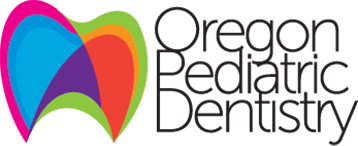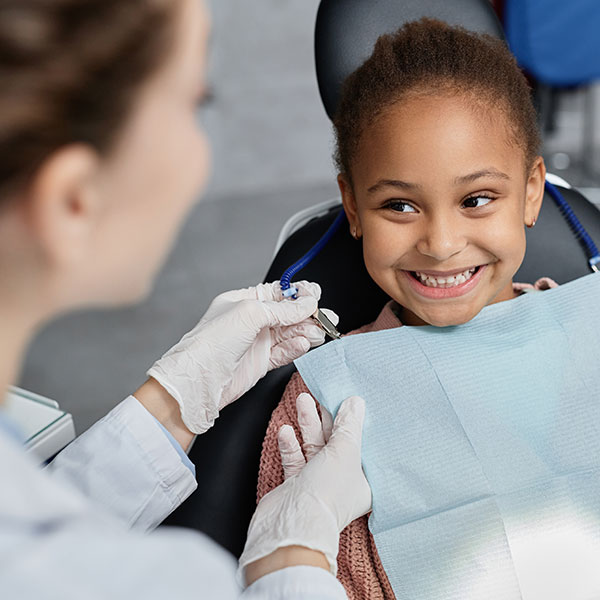Children’s Dental Exams in Oregon, OH
Research tells us that oral health and overall health are intertwined. It makes perfect sense when considering that everything in the mouth has direct access to internal organs and systems. Both the American Academy of Pediatric Dentistry and the American Academy of Pediatrics recommend that children have a dental exam and cleaning every six months. We’re here to provide comprehensive dental exams and thorough dental cleanings so that your kiddos can enjoy great oral health, great overall health, and a beautiful smile.
One significant fact about oral health being linked to overall health is that poor oral health has been associated with various systemic conditions, including cardiovascular diseases, diabetes, and respiratory infections. Research suggests that the bacteria and inflammation from periodontal (gum) disease can enter the bloodstream and contribute to these conditions. Additionally, oral health issues can affect one’s ability to eat, speak, and maintain proper nutrition, which can further impact overall health. Therefore, maintaining good oral hygiene habits and seeking regular dental care can play a crucial role in promoting overall health and well-being.
DID YOU KNOW?
Nearly half of American kids develop one or more cavities by their 19th birthday.
Scheduling preventive dental exams and cleanings can slip through the cracks with the commitments and busy schedules of modern families. Here’s a tip to help you stay on track. Schedule dental exams and cleanings during summer and winter breaks from school. This will properly space the visits out, and as a bonus, the kids won’t miss any school.
Back to School Dental Exams & Cleanings
When you bring your school-aged child or teen in for a checkup, expect an awesome Kidsperience! Our entire office in Oregon is dedicated to making kids feel welcome, comfortable, and well cared for.
At dental exams, our dentist will assess your child’s mouth by inspecting each tooth individually, consulting X-rays, and probing the gums. This assessment will determine whether your child has cavities, gum disease, or other dental damage that requires treatment.
A balanced, healthy relationship between the upper and lower teeth is important to good oral health and comfortable oral function. The position of your child’s jaws when the mouth is shut is called occlusion. We check for malocclusion, which means disharmony in this relationship. If malocclusion is present and your child is over seven years old, we’ll conduct an orthodontic assessment and explain our findings.
We may perform a dental cleaning right after a checkup if gum disease isn’t a concern. Our hygienist will evaluate the depth of periodontal pockets in the gums at the base of the teeth. Pocket depth measurements indicate whether gum disease is an issue. Tracking pocket depths over time allows us to determine whether they’re increasing (bad) or decreasing (good). The hygienist will then clean all your kiddo’s teeth to remove built-up plaque and tartar. They will happily demonstrate easy and effective brushing and flossing techniques, and answer all your dental health questions.
Dental Exams and Cleanings for Babies and Toddlers
Before a little one is old enough for kindergarten, they will grow a full set of baby teeth – 20 in all by age three. It’s important to practice twice-a-day home hygiene and bring them in for dental visits. Semi-annual dental exams let us stay on top of issues like tooth decay, gum disease, and dental development. Dental cleanings can be added once the child can sit still, follow instructions, and tolerate keeping their mouth open for more than a few minutes.
Here are some things to remember about your baby or toddler’s oral health care:
- By age one and within six months of the first tooth fully emerging, a baby should visit the dentist for a brief dental exam. The dentist will check on oral development and voice any concerns, along with recommendations.
- Never allow your baby to go to bed with a bottle in their mouth. Milk, juices, and other beverages in contact with teeth for extended periods leads to a painful condition called baby bottle tooth decay.
- Start brushing your baby’s first tooth when it arrives and continue with twice-daily brushing. Add flossing once two teeth are present next to each other.
- Children under three years of age should use non-fluoridated toothpaste to avoid swallowing fluoride. Over time, swallowing toothpaste can cause white, horizontal lines called fluorosis on the developing permanent teeth within the jaw.
- Once your child can sit still for a dental cleaning, around age four, we’ll add cleanings to the checkup schedule.
- Baby teeth can develop cavities, need dental fillings or crowns. Though baby teeth will fall out, cavities can be painful. Furthermore, tooth decay can spread to surrounding teeth and the developing permanent teeth within the jaws.
Keep Your Child’s Smile Healthy
Whether your kiddos need back-to-school checkups, or your little one is due to attend their very first dental exam, Oregon Pediatric Dentistry is here to help make oral health a priority in your children’s lives. Our team partners with caregivers, providing information, tips, techniques, and advice about children’s oral health care at home and in our office. Schedule a dental exam in Oregon today!
We speak to kids on their level, eye to eye, and with appropriate vocabulary. It’s awesome how much children can soak up at dental visits. Let us help you encourage your kids to practice daily oral care, healthy habits, and smart dietary choices.
Contact us today to schedule a dental exam, cleaning, or orthodontic consultation for your favorite smiles. Your children are sure to enjoy the amazing Kidsperience we create!



